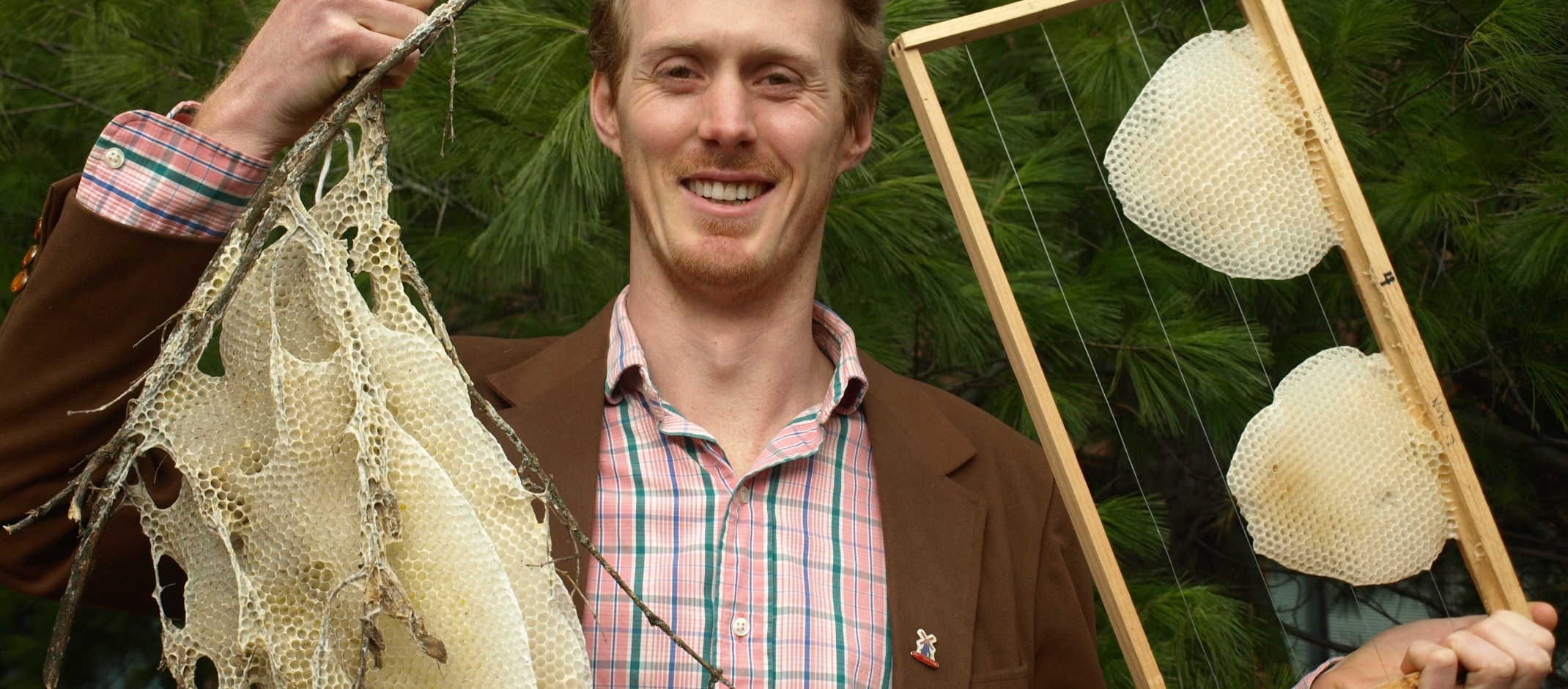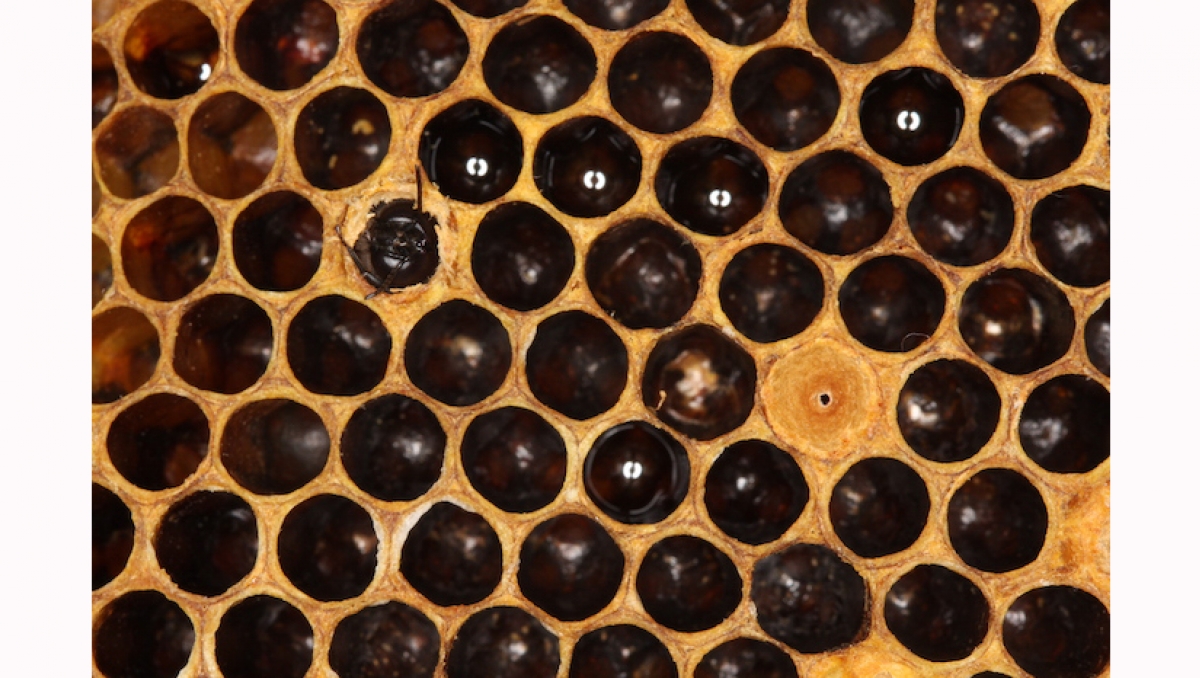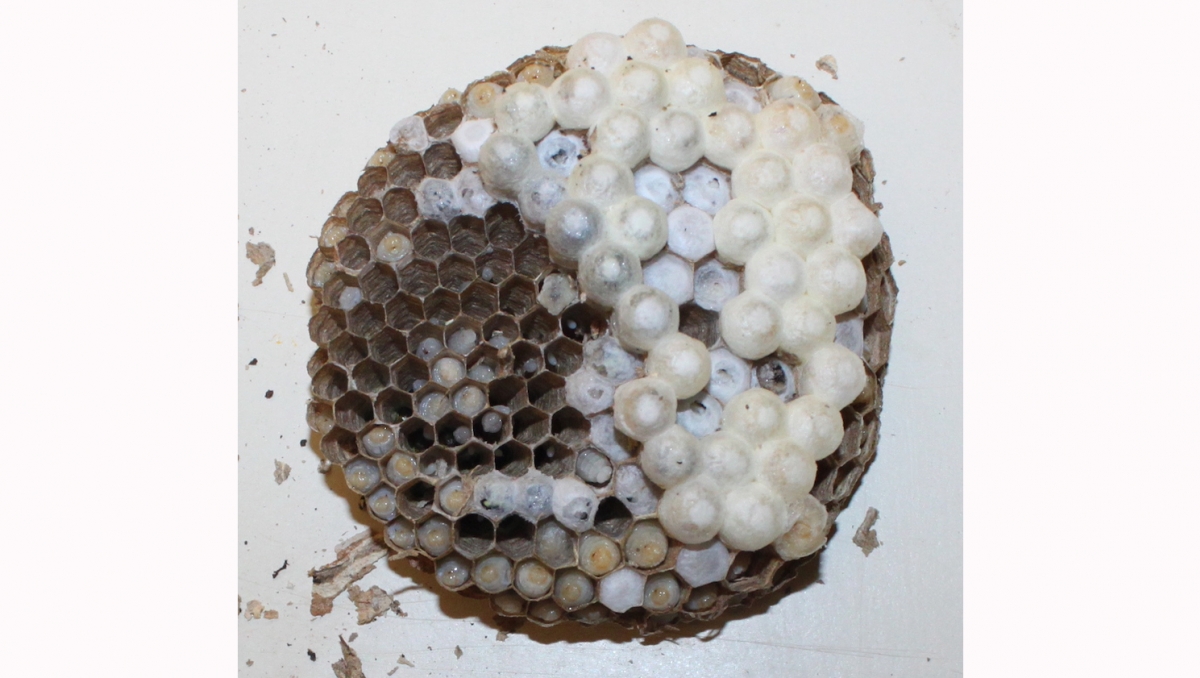Architectural marvels of honey bees and social wasps

If you present social insect biologist Michael L Smith a picture of a honey bee or social wasp comb, he can explain in great detail how the insects fix architectural problems of irregular cell sizes. No wonder, since he and his research team examined photos of 22,745 cells of several species of honey bees and social wasps with a semi-automated method.
“Independently honey bees and social wasps evolved the ability to build hexagonal cells.”
Michael L Smith
There are a few differences such as that bees build with wax, social wasps with paper. Bees build double-sided combs that hang vertically, whereas wasps build single-sided combs that hang horizontally.
But why does an architectural problem occurs? “However, not all animals in the swarm are the same size”, says Smith, affiliate member at the Max Planck Institute of Animal Behavior and the Cluster of Excellence Collective Behaviour and currently professor at Auburn University. The reproductives can vary in how much bigger they are than the workers. “In some species, it is a small difference, in others, the reproductives are much bigger – and so need a bigger cell to be reared within”, explains Smith.
Interactive graphic: Click on the blue dots to find out more about the structure of the dwarf bush bee's nest
Figure 1, Copyright: Bajaree Chuttong
The underlying geometry of the intersection
(A-C) Connection pattern for transition between worker and reproductive cells, where the center of each additional reproductive cell is offset by Δ, the mismatch between worker and reproductive cells.
(A) Lateral displacement of cell centers increasing left to right. The gray disks show the circumscribing circles for center triplets that would be connected in a regular lattice. Note that the disk on the right violates the Delaunay condition (disk contains 4, not 3, cell centers).
(B) This lateral displacement introduces a 5–7 pair.
(C) A transition region introduces intermediate-sized hexagonal cells, but no non-hexagonal cells (3 transition layers, in green).
(D) Observed transition in A. florea showing a sudden transition between worker and reproductive cells, which includes 5–7 pairs (unshaded cells).
(E) Observed transition in V. shidai showing a transition that uses intermediate-sized hexagonal cells, and no 5–7 pairs.
(F) Observed rate of non-hexagonal cells per worker cell as a function of the observed size dimorphism (n = 115 images). The red line is the predicted rate based on a one-step worker-to-reproductive transition for an average transition length (strategy shown in A and B). The shaded area corresponds to transitions that outperform the best one-step transition in terms of non-hexagonal cells. Species with high size dimorphism do not build transition layers (A. andreniformis, A. florea; D), whereas species with moderate-sized dimorphism produce fewer non-hexagonal cells (“better than optimal” shaded region), by employing intermediate-sized cells across the transition region (strategy shown in C, E).
(G) Regression of predicted non-hexagonal cells based on the following: size dimorphism, observed merge length, and depth of the transition region, versus the observed non-hexagonal cells, for each image. Marker size corresponds to the number of data points that fall on the same coordinate. In the model prediction (x-axis), each 5–7 pair produces 2 non-hexagonal cells. The observed non-hexagonal cells (y-axis) counts all non-hexagonal cells, including 4-sided, 8-sided, and unpaired cells. Underlying data can be found at http://dx.doi.org/10.35099/aurora-605.
Predicting the architectural solution
The insects solve the problem of irregular cell size with non-hexagonal cells, which are paired in predictable ways. The most common irregularity is pairs of 5- and 7-sided cells, as the researchers investigated. “We think it’s because there’s a fundamental geometry and perhaps construction method, that results in the particular pairing of non-hexagonal cells”, outlines Michael L Smith. “What's also interesting is that the 5-sided cell is always on the worker-side of the transition, and the 7-side cell is on the reproductive side”, says Smith.
Cross section of a nest of Apis mellifera. The species Apis mellifera is also known as the European Honey Bee or the Western Honey Bee. It is the most common honey bee species in the world and also the preferred species of beekeepers. It is likely that you have encountered this bee before as they can be found on every continent with the exception of Antarctica.
The research team knew that all the species were going to have to ‘fix’ this problem in some way: “But when we saw that they are all pretty much doing the exact same thing, with some minor variations, that was really exciting”, remembers Smith. “If someone found a totally new species and told us how big the worker and reproductive cells are, we could predict how they would fix that architectural problem, and which ‘tricks’ the insects would use. This would also likely apply to other hexagonal structures, even beyond the social insects.”
The study was possible due to a network of collaborators across the world, who either had photographs of nests from previous work, or were able to get additional photographs.
Interactive graphic: Honey bees and social wasps solve building problems with the same architectural tricks
Figure 2, Copyright: Michael L. Smith with photos of Kevin J. Loope, James C. Makinson, Tatsuya Saga and Bajaree Chuttong
Application options
Hexagonal arrays are used in many contexts, like the wings of airplanes. “The hexagon is a particularly useful shape because it's lightweight, strong, and flexible”, says Smith. “But in some cases, you might want one size of hexagon in one place, and a different sized hexagon in another place for example because one spot needs to be more rigid than another. Currently, the way we fix that architectural problem is just putting a large metal brace on it. Well, the bees and wasps have shown us how this can be done in a smarter way.”





